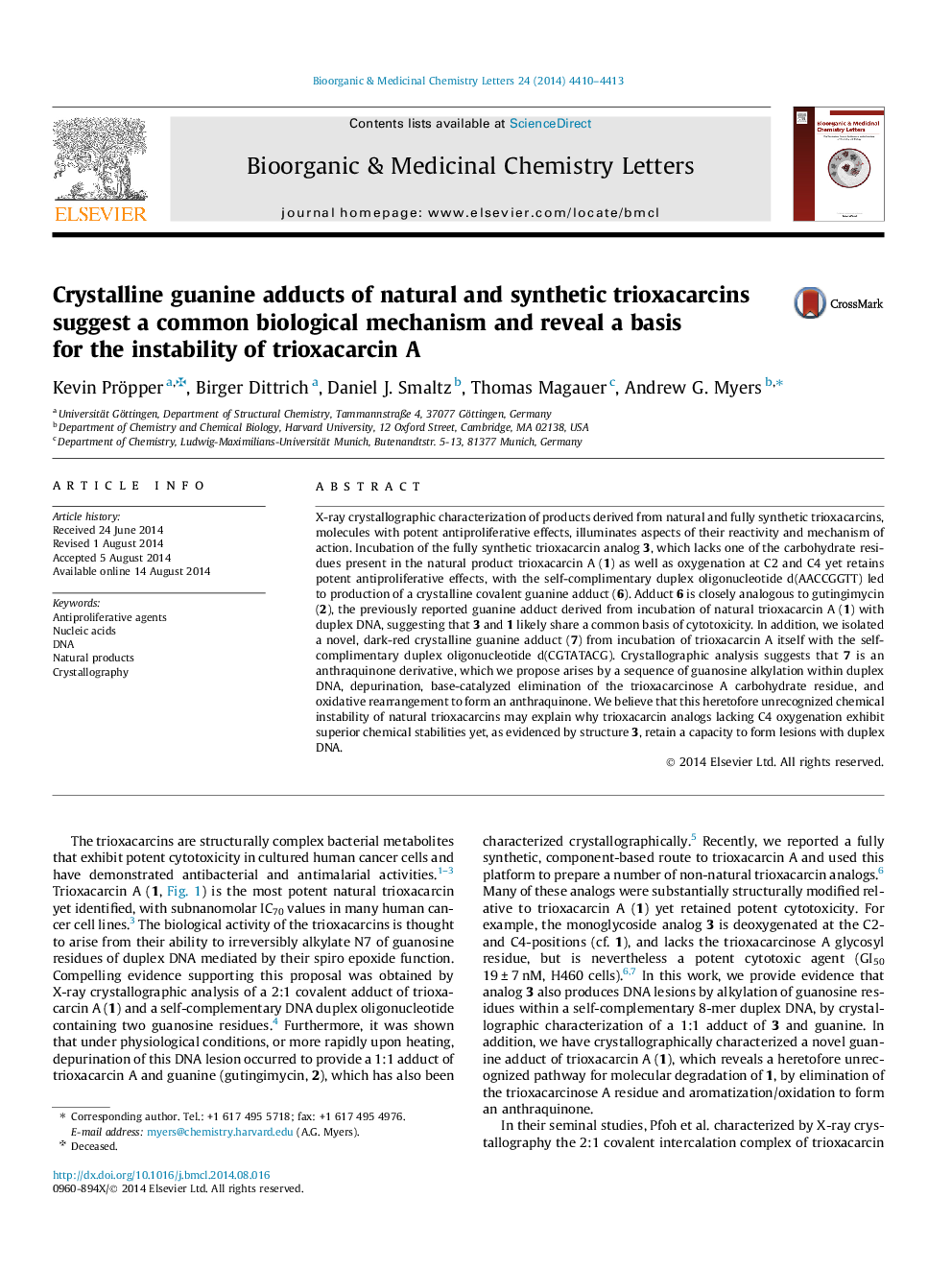| Article ID | Journal | Published Year | Pages | File Type |
|---|---|---|---|---|
| 1368839 | Bioorganic & Medicinal Chemistry Letters | 2014 | 4 Pages |
X-ray crystallographic characterization of products derived from natural and fully synthetic trioxacarcins, molecules with potent antiproliferative effects, illuminates aspects of their reactivity and mechanism of action. Incubation of the fully synthetic trioxacarcin analog 3, which lacks one of the carbohydrate residues present in the natural product trioxacarcin A (1) as well as oxygenation at C2 and C4 yet retains potent antiproliferative effects, with the self-complimentary duplex oligonucleotide d(AACCGGTT) led to production of a crystalline covalent guanine adduct (6). Adduct 6 is closely analogous to gutingimycin (2), the previously reported guanine adduct derived from incubation of natural trioxacarcin A (1) with duplex DNA, suggesting that 3 and 1 likely share a common basis of cytotoxicity. In addition, we isolated a novel, dark-red crystalline guanine adduct (7) from incubation of trioxacarcin A itself with the self-complimentary duplex oligonucleotide d(CGTATACG). Crystallographic analysis suggests that 7 is an anthraquinone derivative, which we propose arises by a sequence of guanosine alkylation within duplex DNA, depurination, base-catalyzed elimination of the trioxacarcinose A carbohydrate residue, and oxidative rearrangement to form an anthraquinone. We believe that this heretofore unrecognized chemical instability of natural trioxacarcins may explain why trioxacarcin analogs lacking C4 oxygenation exhibit superior chemical stabilities yet, as evidenced by structure 3, retain a capacity to form lesions with duplex DNA.
Graphical abstractFigure optionsDownload full-size imageDownload as PowerPoint slide
